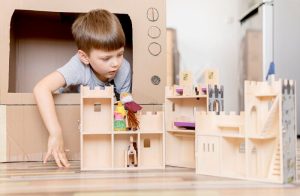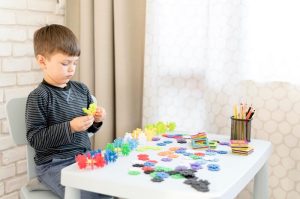Are you planning a trip with your little one? As a parent, you know that traveling with a baby requires Read More
Your One-Stop-Shop For Expert Reviews
Shopping for baby gear can be overwhelming, but our comprehensive buying guides and top picks will simplify the process. Browse our recommendations and make informed decisions for your family.
If you're a parent or caregiver looking for a baby bouncer that provides fun and excitement while keeping your little Read More
By Theresa, Kathleen & Barbara As a new parent, watching your little one take their first steps is an unforgettable Read More
After hours of research, we have analyzed twenty popular models in which we found 6 Best Baby Push Walkers today. Read More
By Theresa Generally, at the age of twelve months, babies start to walk. But as it’s human instinct, they start Read More
By Kathleen If you are looking for an alternative to the regular walkers, then this Evenflo Exersaucer Bounce and Learn Read More
By Theresa Love, Play and Learn with the Hape Wonder Walker. This walker has been carefully designed keeping in mind Read More
How about letting your child enjoy their first step and boost their confidence as well, the Baby Einstein Walker has Read More
This VTech Sit to Stand Alphabet Train designed by V-tech is a complete package for your little one especially when Read More
Page [tcb_pagination_current_page] of [tcb_pagination_total_pages]
Nurturing the Newborn's Journey

The Ultimate Guide to Finding the Perfect Newborn Photography Near Me
In the heartwarming journey of welcoming a newborn into the world, every smile, every tiny gesture, and every fleeting expression are moments

Baby Jasje Newborn:The Perfect Attire for Your Little Bundle of Joy
Are you eagerly anticipating the arrival of your newborn baby? As a parent, you want to provide the best for your little

Newborn All-in-One Cloth Diapers: A Comprehensive Overview
Newborn all-in-one cloth diapers are becoming increasingly popular among parents who prefer an eco-friendly and cost-effective alternative to disposable diapers. These cloth

Dealing With Common Newborn Ailments
Welcoming a newborn into the world is an incredible experience, but it can also bring about challenges, especially when your little one

Navigating Newborn Health: A Professional Literature Review on Umbilical Cord Care
In this article, we will delve into the topic of umbilical cord care for newborns, providing a comprehensive literature review on umbilical

Understanding Newborn Hydration: When Should I Give My Newborn Water?
Welcoming a newborn into the world comes with a multitude of responsibilities, including ensuring proper nutrition and hydration. As a parent, it

Why is My Newborn Baby Crying for No Reason?
The sound of a crying newborn can be distressing for parents, especially when they are unable to identify the cause. Babies communicate

The Ultimate Guide to Newborn Baby Feeding: Everything You Need to Know
Newborn baby feeding is a crucial aspect of caring for your little one. As a parent, it's important to understand the significance

Mastering Newborn Baby Sleep: Tips for Restful Nights
Having a newborn baby brings immeasurable joy and happiness to any household. However, the sleep patterns of newborns can often be challenging
Page [tcb_pagination_current_page] of [tcb_pagination_total_pages]
Caring For Your Baby As If They Were Our Own

The Best Camera for Sports Mom Who Prioritize Baby Travel Safety
From soccer games to gymnastics competitions, being a sports mom means capturing fast-paced moments for a lifetime of memories. And for that,
Best Baby Bottles for Feeding Your Little One
How to Choose the Best Baby Bottles for Your Little One?Choosing the right baby bottle can make a big difference in your

Best Baby Bottle Drying Racks: Keep Your Baby’s Feeding Gear Clean and Dry
As a new parent, keeping your baby's feeding gear clean and dry is a top priority. But with so many baby bottles,

The Best Bottle Warmers for Hassle-Free Baby Care
As a new parent, ensuring that your baby is well taken care of and comfortable is a top priority. One of the

Best Baby Scales: A Comprehensive Guide for Parents
By Theresa & Kathleen As a parent, keep track of your baby's weight, growth, and overall, because health is very crucial. This

Decision-Making Guide for Buying Baby Gates
As a new parent, your baby's safety is your top priority. One of the most significant risks to your baby's safety is
Page [tcb_pagination_current_page] of [tcb_pagination_total_pages]
Bringing Joy To Parenthood, One Blog Post At A Time

Exploring the Benefits of Baby Pull Up Bars: A Comprehensive Guide
I have a 9 month old baby, and he is always on the move. Whether it's crawling, standing, or pulling up on

The Ultimate Guide to Posting Toys That Make Kids Jump with Excitement!
Kids are a bundle of energy, so it's important to have the right toys on hand. Toys that make kids jump with

Exploring the Enchanting World of Toys with Doors That Open and Close
The best toys have doors that open and close. Here are some toys with doors that open and close.Let’s Dip In…1. VTech

Unveiling the Alluring Array of Astonishing Toys that Start with A
Toys are a great way for kids to learn about the world, explore their creativity, and have fun! But not all toys

What to Do When Bored at Home for Kids
Boredom is one of the biggest challenges parents face with their kids. Kids have a lot of energy, and they need to

Gooey Goodness Galore: Crafting the Ultimate Toddler Grilled Cheese
Who can resist the warm, melty embrace of a perfectly grilled cheese sandwich? It's a comfort food classic that transcends generations. But

Comprehensive Guide to Storing Baby Food for Optimal Freshness and Safety
As parents, we understand the importance of providing our little ones with the best nutrition possible. Homemade baby food is an excellent

10 Easy Easter Activities for Toddlers- Fun Ideas for Kids
Easter is a fun-filled holiday celebrated by people of all ages. From Easter egg hunts to bunny-shaped treats, there are plenty of

How to Keep Baby Bottle Warm At Night? Tips and Tricks
When it comes to caring for a baby, especially during nighttime feedings, keeping the baby bottles warm is of utmost importance. A
Page [tcb_pagination_current_page] of [tcb_pagination_total_pages]
AMAZON ASSOCIATES PROGRAM
BabyWalkerPro is a participant in the Amazon Services LLC Associates Program, an affiliate advertising program designed to provide a means for sites to earn advertising fees by advertising and linking to Amazon.com. *Amazon and the Amazon logo are trademarks of Amazon.com, Inc., or its affiliates
1974 Acacia Ave, Sutter, California, 95982, USA.
Copyright © 2024 BabyWalkerPro | All Rights Reserved

